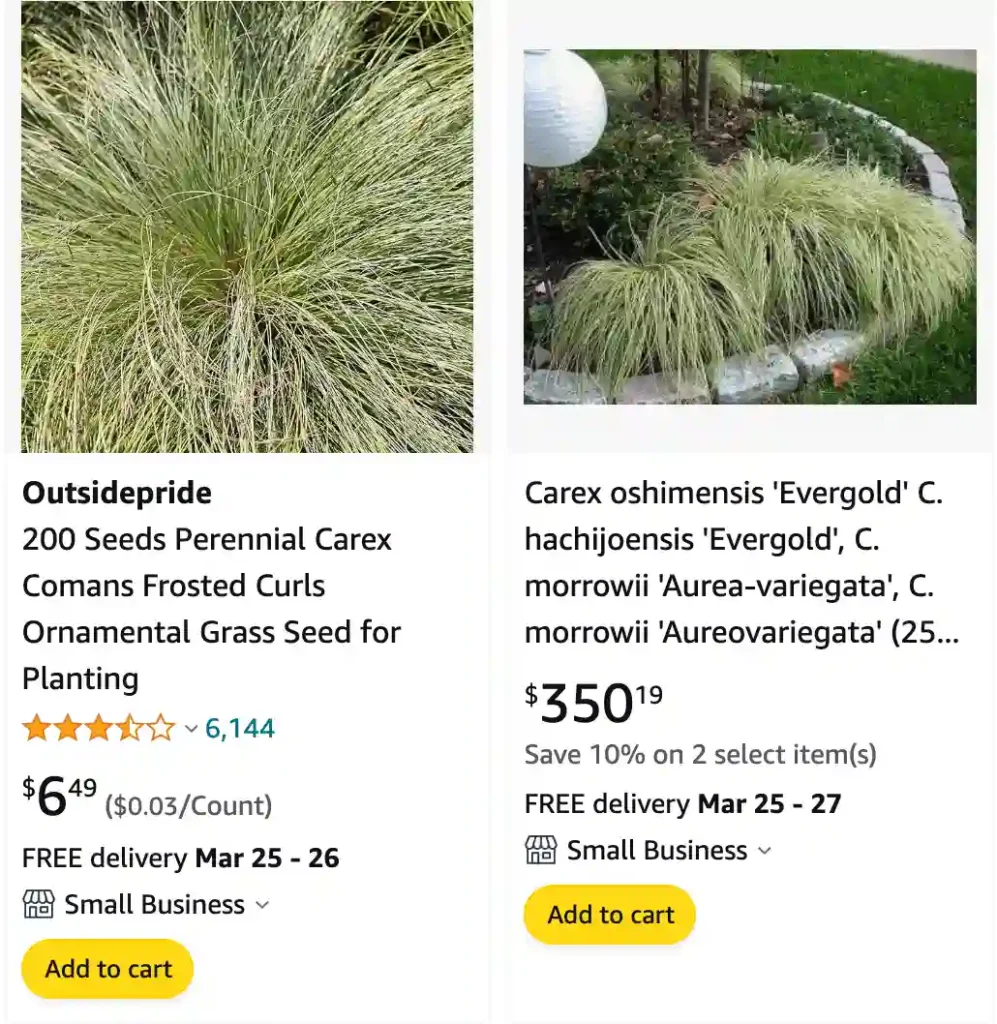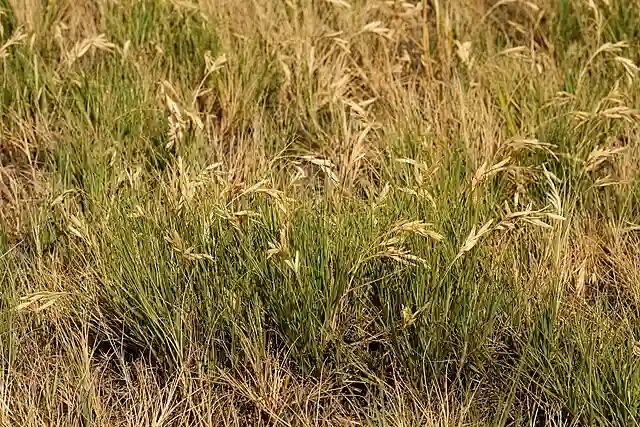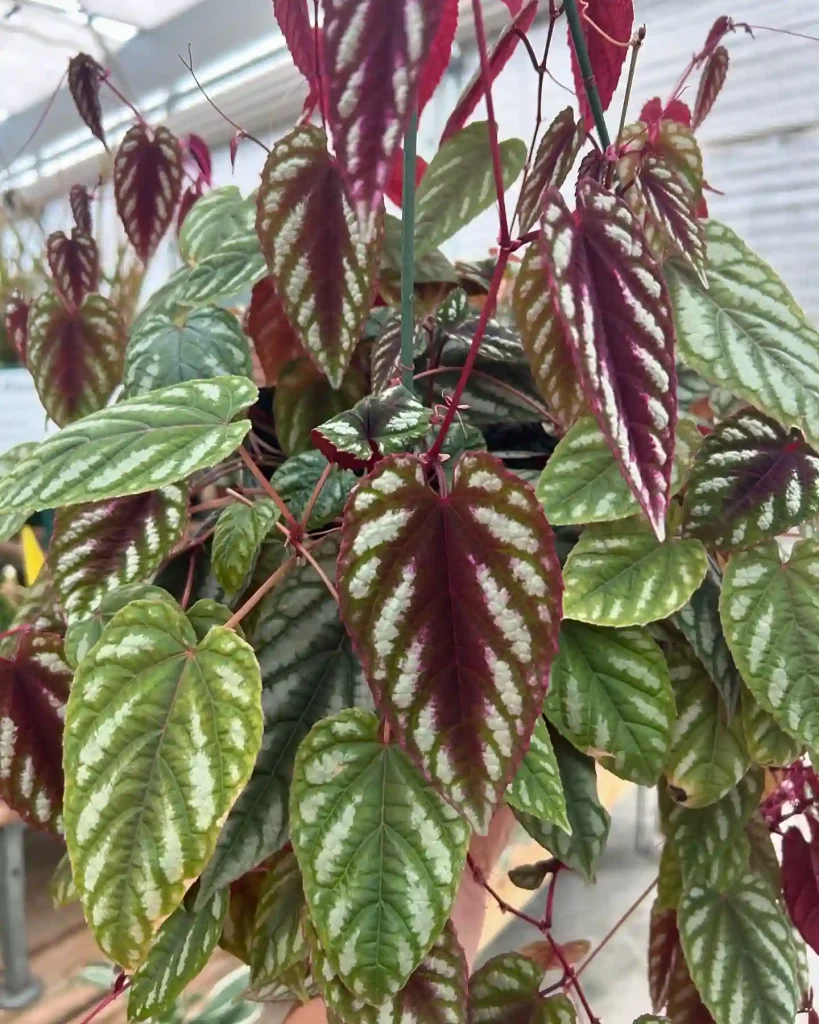
How to prune Carex Evergold?
Pruning Carex Evergold, a beautiful ornamental grass, is relatively straightforward. I typically prune it in late winter or early spring before new growth emerges. Using sharp, clean shears, I trim back any dead or damaged foliage, as well as any overgrown or unruly stems, to maintain its neat and compact appearance.
2324 Species in Genus Carex
Is Carex Evergold poisonous to dogs?
As far as I’m aware, Carex Evergold is not considered poisonous to dogs. However, it’s always a good idea to monitor pets around plants and consult with a veterinarian if there are any concerns about potential ingestion.
Can you divide Carex Evergold?
Yes, Carex Evergold can be divided to rejuvenate the plant and create new specimens. I’ve successfully divided mine to propagate it and maintain its vigor. Dividing the plant is best done in early spring or early autumn when the weather is cool and the plant is not actively growing.
How to divide Carex Evergold?
Dividing Carex Evergold is a simple process. I carefully dig up the plant and gently separate the clumps into smaller sections, making sure each division has a good portion of roots attached. Then, I replant the divisions in well-draining soil and water them thoroughly to help them establish in their new locations.
Is Carex Evergold evergreen?
Carex Evergold is a semi-evergreen grass, meaning it retains its foliage throughout most of the year, especially in milder climates. However, in colder regions, it may lose some of its leaves during the winter months.
How to grow Carex Evergold?
Here’s a guide on how to grow Carex Evergold:
Planting:
- Timing: The best time to plant Carex Evergold is in spring. This allows the plant to establish a good root system before the hot summer months. However, planting in fall can also be successful in areas with mild winters.
- Location: Choose a location that receives full sun to part shade. While they tolerate partial shade, full sun exposure will result in the best foliage color, with the vibrant golden hues being more pronounced.
- Soil: Carex Evergold prefers moist, fertile, and well-drained soil. They can adapt to a variety of soil types (chalk, clay, loam, or sand) and pH levels, but avoid planting them in constantly soggy soil.
- If your soil is heavy clay, amending it with compost or other organic matter before planting can improve drainage.
- Planting process:
- Dig a hole slightly larger than the root ball of your Carex Evergold.
- Gently loosen the plant from its container and place it in the hole, ensuring the crown (where the leaves meet the root) sits slightly above the soil surface.
- Backfill the hole with the dug-up soil, tamping it down gently to remove air pockets.
- Water thoroughly to settle the soil around the roots.
Care:
- Watering: Water regularly, especially during the first growing season and during hot, dry spells. The soil should be consistently moist but not soggy. Here’s a simple way to check moisture: Stick your finger into the top inch of soil. If it feels dry to the touch, it’s time to water.
- Mulching: Apply a layer of mulch (around 2-3 inches deep) around the base of the plant to retain moisture, regulate soil temperature, suppress weeds, and protect the roots from extreme temperatures. Use well-aged shredded bark, pine needles, or wood chips as mulch.
- Fertilizing: Frequent fertilization is not necessary. However, a balanced fertilizer formulated for perennials applied in early spring can be beneficial. Follow the package instructions for dosage and application.
- Dividing: Carex Evergold can be propagated by division in early summer. Dig up the mature clump, carefully separate the sections with healthy roots and leaves, and replant them in new locations following the planting process mentioned above.
Additional Tips:
- Carex Evergold is generally pest and disease resistant. However, watch out for common garden problems like slugs or snails. These pests can be controlled with organic methods like handpicking or using beer traps.
- Routine pruning is not required. However, you can remove dead, diseased, or damaged leaves in late winter or early spring to maintain a tidy appearance.
- Carex Evergold is a low-maintenance plant that provides year-round interest in your garden. Its bright golden foliage adds a cheerful touch to borders, beds, or used as groundcover.
How to propagate Carex Evergold?
Propagating Carex Evergold is relatively easy and can be done through division or by collecting and sowing seeds. Personally, I prefer division as it allows me to maintain the characteristics of the parent plant. However, if seeds are collected, they can be sown in pots or directly in the garden in spring.
Is Carex Evergold poisonous to cats?
As far as I know, Carex Evergold is not considered poisonous to cats. However, it’s always a good idea to monitor pets around plants and consult with a veterinarian if there are any concerns about potential ingestion.
When to cut back Carex Evergold?
I typically cut back Carex Evergold in late winter or early spring before new growth emerges. This helps rejuvenate the plant and remove any dead or damaged foliage accumulated over the previous growing season. Using sharp, clean shears, I trim back the foliage to just above the soil level, being careful not to damage any emerging shoots.
If i die, water my plants!


